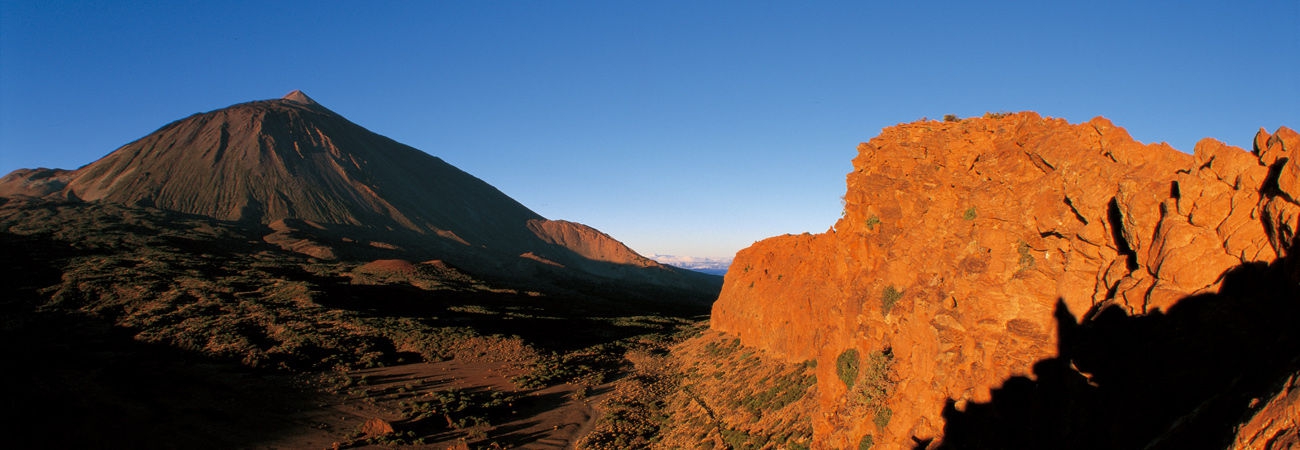Three million years ago
About three million years ago, the most active centre of volcanic activity shifted toward the central zone of the island. It would seem that, first a great dorsal mountain range was formed, with concentrations of lava accumulating locally on each side, in the form of spurs, leaving deep "valleys" between them, such as La Orotava and Guimar.
This volcanic activity continues to take place through fissures and its composition, as in the former volcanoes, is predominantly basaltic. This stage, represented in diagram B, culminates with the formation of a great central dome, contrasting with previous linear structures, not just for its shape, but also its materials, in which trachytes and phonolites prevail. The end of this stage came with the partial destruction of the main central volcano of the island, whose summit collapsed, forming one of the most impressive calderas on earth: el Circo de Las Cañadas. The southern wall of the depression still conserves an escarpment that towers several hundred metres over the floor of the crater, which, in turn, measures up to 17 kilometres across.
The genesis of the Circo of Las Cañadas still arouses controversy among geologists and there are several different theories on the subject, including explosion, erosion, collapse and enormous land slips. The most widely accepted theory up to the early nineties was collapse being the main cause of the crater. This supposed that the caldera was composed of two sub-calderas - a western one and an eastern one - separated by Roques de Garcia and formed by successive collapses and sinking. The current impressive structure of the Teide-Pico Viejo stratovolcano was formed later in the northern part of Las Cañadas. This stratovolcano and the caldera are the largest structures in the national park.
Research of the subsoil and studies of the sea bed in recent years, however, have confirmed the hypothesis put forward by Tenerife geologist and geographer Telesforo Bravo since 1962: Both Las Cañadas del Teide and the Orotava and Guimar valleys are depressions formed by large gravitational landslides of part of the island - of more than 100 Km3.
Dating studies place the Guimar valley event 800,000 years ago, the Orotava valley event 500,000 years ago and Las Cañadas 170,000 years ago.








